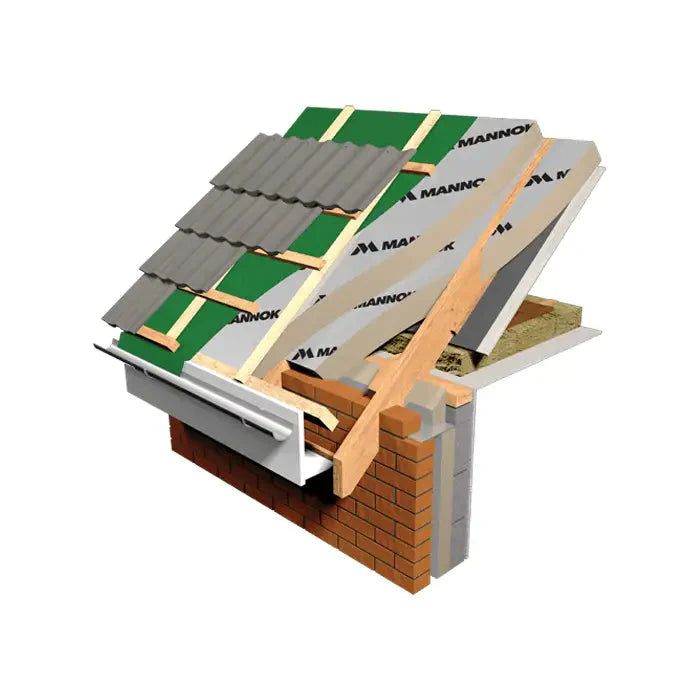When it comes to roofing, insulation is a crucial component that often gets overlooked. Proper roof insulation not only enhances comfort but also improves energy efficiency in your home, leading to lower heating and cooling costs. With various types of roof insulation available, it’s essential to understand their pros and cons to make an informed choice roof insulation. In this blog post, we’ll explore the most common types of roof insulation and their respective advantages and disadvantages.

1. Fiberglass Insulation
Pros:
- Cost-Effective: Fiberglass insulation is one of the most affordable options available.
- Fire Resistant: It has a high melting point, making it fire-resistant.
- Non-Combustible: It doesn’t burn easily, providing added safety for your home.
- Noise Reduction: Fiberglass can help reduce noise transmission between rooms.
Cons:
- Installation Difficulty: It requires careful handling and installation, as improper installation can lead to air leaks.
- Moisture Absorption: Fiberglass can absorb moisture, reducing its effectiveness and potentially leading to mold growth if not installed correctly.
- Health Concerns: Fiberglass particles can irritate the skin and lungs, so protective gear is essential during installation.
2. Foam Board Insulation
Pros:
- High R-Value: Foam board insulation typically offers a higher R-value per inch than fiberglass, meaning it provides better thermal resistance.
- Moisture Resistant: It is less susceptible to moisture absorption, making it suitable for areas prone to dampness.
- Versatile: Foam boards can be used in various applications, including attics, walls, and basements.
Cons:
- Cost: Foam board insulation can be more expensive than fiberglass.
- Installation Complexity: Proper installation requires careful cutting and fitting to ensure there are no gaps.
- Limited Soundproofing: While it provides excellent thermal insulation, foam board offers less noise reduction compared to other materials.
3. Spray Foam Insulation
Pros:
- Seamless Barrier: Spray foam expands on application, creating a seamless barrier that minimizes air leaks.
- High R-Value: It provides excellent thermal resistance, outperforming many other insulation types.
- Moisture Barrier: Spray foam acts as a barrier against moisture, reducing the risk of mold and rot.
Cons:
- Cost: Spray foam insulation is one of the most expensive insulation options available.
- Professional Installation Required: Its application requires specialized equipment and expertise, making DIY installation impractical.
- Potential Off-Gassing: Some spray foam products may release volatile organic compounds (VOCs), which can affect indoor air quality.
4. Cellulose Insulation
Pros:
- Eco-Friendly: Made from recycled paper products, cellulose insulation is an environmentally friendly option.
- Good Soundproofing: It offers excellent sound absorption properties, making it ideal for noise-sensitive areas.
- Effective Thermal Resistance: Cellulose has a decent R-value and can provide effective thermal insulation.
Cons:
- Settling Over Time: Cellulose can settle over time, reducing its effectiveness and requiring periodic maintenance.
- Moisture Concerns: If not treated, cellulose can be prone to moisture absorption, leading to mold growth.
- Installation Challenges: Proper installation is crucial to avoid settling and air gaps, which may require professional assistance.
5. Mineral Wool (Rock Wool) Insulation
Pros:
- Fire Resistant: Mineral wool is non-combustible and can withstand high temperatures.
- Soundproofing Qualities: It provides excellent sound insulation, making it ideal for multi-family homes.
- Moisture Resistant: It does not absorb water, reducing the risk of mold and mildew.
Cons:
- Higher Cost: Mineral wool tends to be more expensive than fiberglass and cellulose.
- Weight: Its weight can make installation more challenging and may require additional support structures.
- Dust Irritation: Similar to fiberglass, mineral wool can irritate the skin and respiratory system, requiring protective gear during installation.
Conclusion
Choosing the right type of roof insulation depends on various factors, including your budget, climate, and specific insulation needs. Each insulation type has its pros and cons, so it’s crucial to weigh these factors before making a decision. Whether you opt for the cost-effectiveness of fiberglass, the eco-friendliness of cellulose, or the superior performance of spray foam, proper insulation can lead to a more comfortable and energy-efficient home.